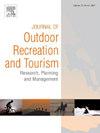Classifying climate change adaptation measures for ski areas and ski lifts – The case of Bavaria, Germany
IF 4.4
3区 管理学
Q1 HOSPITALITY, LEISURE, SPORT & TOURISM
Journal of Outdoor Recreation and Tourism-Research Planning and Management
Pub Date : 2025-09-12
DOI:10.1016/j.jort.2025.100939
引用次数: 0
Abstract
Ski tourism is facing increasing challenges due to climate change and adapting to these changes is particularly imperative for ski areas at lower altitudes. With snowmaking as the primary adaptation for ski areas, knowledge on alternative strategies and their effectiveness to address future climate risks is limited. Furthermore, it remains unclear to what extent, and by which types of ski areas, these alternatives are implemented, and what factors drive or hinder their adoption. To address these research gaps on transformational adaptation of ski areas, we employ a mixed-method approach, integrating quantitative survey data (n = 83) and qualitative interview insights (interviews with seven ski area operators) on the case of ski areas and ski lifts in Bavaria (southern Germany). We develop a framework to categorise adaptation measures according to their depth of intervention from inaction to transformation, assess their current implementation status, and group 240 Bavarian ski areas into five distinct clusters.
Our findings reveal differences among ski area clusters regarding implemented and planned adaptation measures. The clusters comprising smaller, snow-unreliable ski areas exhibit a significant proportion of ski areas with little to no adaptation measures. However, interview insights demonstrate that their unique organisational structures may protect them from severe climate-induced losses, which the literature identifies as an expected consequence of inaction in response to climate change. In contrast, for larger, more snow-reliable ski areas in Bavaria, we observed a relatively strong reliance on coping measures and, unlike findings from other studies, a moderate to strong implementation of transformative adaptations, such as product diversification and year-round operation. Our paper contributes to the literature by integrating the concept of transformation from climate change research to research on ski areas, thereby conceptualising climate change adaptation measures and their potential capacity to address future climate change risks.
Management implications
Considering the urgent need for climate adaptation in Bavaria's low-altitude ski areas, this paper highlights the heterogeneity of the region's ski areas and ski lifts, underscoring significant variations in their size and climatic conditions. By introducing a framework for categorising adaptation measures, it demonstrates that adaptation measures for ski infrastructure vary in how much they modify existing systems.
The analysis of currently implemented or planned adaptation measures among Bavarian ski areas and ski lifts reveals significant differences between the surveyed clusters regarding the types and extent of adaptation efforts. Understanding the diversity of ski infrastructure in Bavaria, the varying levels of intervention associated with different adaptation options, as well as the empirical analysis of the status quo of climate change adaptation in Bavarian ski areas and ski lifts provides ski area managers and other practitioners with a more nuanced perspective. This enables them to make informed strategic decisions regarding adaptation options and to act from a position of strength and knowledge, rather than out of necessity.
针对滑雪场和滑雪缆车的气候变化适应措施分类——以德国巴伐利亚为例
由于气候变化,滑雪旅游面临越来越多的挑战,适应这些变化对于低海拔的滑雪场来说尤为重要。由于造雪是滑雪场的主要适应方式,关于应对未来气候风险的替代策略及其有效性的知识有限。此外,目前还不清楚这些替代方案在多大程度上、在哪些类型的滑雪场得到实施,以及哪些因素推动或阻碍了它们的采用。为了解决这些关于滑雪场转型适应的研究空白,我们采用混合方法,结合定量调查数据(n = 83)和定性访谈见解(对7个滑雪场运营商的访谈),以巴伐利亚(德国南部)的滑雪场和滑雪缆车为例。我们开发了一个框架,根据从不作为到转型的干预深度对适应措施进行分类,评估其目前的实施状况,并将240个巴伐利亚滑雪场分为五个不同的集群。我们的研究结果揭示了滑雪区集群在实施和计划的适应措施方面的差异。由较小的、雪不可靠的滑雪场组成的滑雪场群显示出很大比例的滑雪场几乎没有适应措施。然而,访谈的见解表明,他们独特的组织结构可以保护他们免受严重的气候导致的损失,这是文献中确定的不作为应对气候变化的预期后果。相比之下,对于巴伐利亚更大、更可靠的滑雪区,我们观察到对应对措施的相对强烈依赖,并且与其他研究的结果不同,适度到强烈地实施变革性适应,例如产品多样化和全年运营。本文通过整合从气候变化研究到滑雪场研究的转变概念,从而概念化气候变化适应措施及其应对未来气候变化风险的潜在能力,从而为文献做出贡献。考虑到巴伐利亚低海拔滑雪场气候适应的迫切需要,本文强调了该地区滑雪场和滑雪缆车的异质性,强调了其规模和气候条件的显著差异。通过引入一个对适应措施进行分类的框架,它证明了滑雪基础设施的适应措施在多大程度上改变了现有系统。对巴伐利亚滑雪场和滑雪缆车目前实施或计划的适应措施的分析显示,在适应工作的类型和程度方面,被调查集群之间存在显著差异。了解巴伐利亚州滑雪基础设施的多样性,与不同适应方案相关的不同干预水平,以及对巴伐利亚滑雪场和滑雪缆车气候变化适应现状的实证分析,为滑雪场管理者和其他从业者提供了更细致入微的视角。这使它们能够就适应方案做出知情的战略决策,并从实力和知识的角度采取行动,而不是出于必要性。
本文章由计算机程序翻译,如有差异,请以英文原文为准。
求助全文
约1分钟内获得全文
求助全文
来源期刊

Journal of Outdoor Recreation and Tourism-Research Planning and Management
HOSPITALITY, LEISURE, SPORT & TOURISM-
CiteScore
6.70
自引率
5.30%
发文量
84
期刊介绍:
Journal of Outdoor Recreation and Tourism offers a dedicated outlet for research relevant to social sciences and natural resources. The journal publishes peer reviewed original research on all aspects of outdoor recreation planning and management, covering the entire spectrum of settings from wilderness to urban outdoor recreation opportunities. It also focuses on new products and findings in nature based tourism and park management. JORT is an interdisciplinary and transdisciplinary journal, articles may focus on any aspect of theory, method, or concept of outdoor recreation research, planning or management, and interdisciplinary work is especially welcome, and may be of a theoretical and/or a case study nature. Depending on the topic of investigation, articles may be positioned within one academic discipline, or draw from several disciplines in an integrative manner, with overarching relevance to social sciences and natural resources. JORT is international in scope and attracts scholars from all reaches of the world to facilitate the exchange of ideas. As such, the journal enhances understanding of scientific knowledge, empirical results, and practitioners'' needs. Therefore in JORT each article is accompanied by an executive summary, written by the editors or authors, highlighting the planning and management relevant aspects of the article.
 求助内容:
求助内容: 应助结果提醒方式:
应助结果提醒方式:


